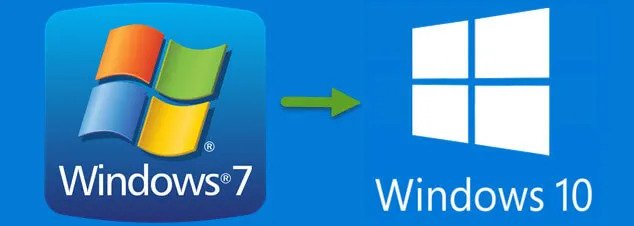Your Guide on Cloud Migrations and Cybersecurity
Videos
Conversations at Cloud Ranch v.1
We're starting off the new year with the first of our regular installments of "Conversations at Cloud Ranch". Meet president and founder Shane Hannan and learn more about one of the fastest growing companies in the Cyber Security, Cloud migration and AI space.
Conversations at Cloud Ranch v.2
Our latest installment of Conversations at Cloud Ranch with founder and CEO Shane Hannan. We'll talk about our recent company kickoff in AZ and Shane offers insight into he phenomenal growth trajectory of the company. We'll also feature our executive team in future segments.
Pro Cloud SaaS Blog
4 Reasons Why You Should Migrate from Windows 7 to Windows 10

By John Beuke
Your enterprise years ago upgraded to Windows 7 and has been very happy since without any major issues. So why should you now migrate your users’ operating systems from Windows 7 to Windows 10, especially after you skipped the Windows 8 release? This blog will provide you four good reasons why you would be better off migrating your workforce to Windows 10.
1. Security
Of all the reasons that make Windows 10 a must-do upgrade, security is at the top of the list. But wait, you say, your enterprise has never had any security issues. While that statement may be accurate, it’s irrelevant. As they say in the investment industry: “Past performance is no guarantee of future results.” The fact that your organization has never suffered a serious cybersecurity breach (one that you know about, anyway) doesn’t mean it won’t happen to you today, with devastating results.
This is a fact: Windows 10 has far better built-in security features than Windows 7. In thinking about Windows 10 from a security perspective, Microsoft gained valuable experience from security flaws discovered in Windows 7. They have taken those lessons learned from Windows 7, and used them to make Windows 10 more secure. Now it’s true Microsoft has patched Windows 7 to fix many vulnerabilities, but it is still not nearly as secure as Windows 10. Here is why:
- As mentioned above, Windows 10 was designed from the ground up to be far more secure.
- The internal workings of Windows 10 are not the same as Windows 7.
- In developing Windows 10, Microsoft moved from a reactive to a proactive security posture. From Day 1, Windows 10 was specifically designed to function securely in the increasingly hostile and mobile computing world.
- Windows 7’s approach to security was patching known vulnerabilities. In Windows 10, security is designed into its core architecturally. For example, the Device Guard feature is a combination of enterprise-related hardware and software security features that, when configured together, will lock a device down so that it can only run trusted applications defined in your organization’s code integrity policies.
Windows is without a doubt the biggest target for hacking, ransomware and malware attacks. In a world where the bad guys have gone from individual aggressors and shady websites to “state” operated and funded hacking teams, the publicly and non-publicly known security holes in Windows 7 will continue to prove exploitable to attackers. Having adapted to the increasingly sophisticated techniques of these bad actors, the Microsoft security team has applied the knowledge it has gained over the past decade-plus to development of Windows 10.
2. User Experience
Windows 10 gives users increased productivity tools so they can work faster, better and safer. There are many of these features, but below is a short list:
Startup Speed—Check out the videos on YouTube comparing Windows 10 startup time to that of any other OS.
OneDrive On-Demand Syncing—In today’s enterprise office users rely heavily on cloud storage. They can keep their files in the cloud without using disk space and share them on demand as needed. With On-Demand Syncing these files are automatically backed up.
Voice Typing—Simply press Windows Key-H (for “hear”) and your PC starts typing what you say. Setup is nonexistent.
Nearby Sharing—A feature that is very similar to Apple’s AirDrop. Nearby Sharing increases user productivity by sharing files and documents directly with other users. It does so via Bluetooth or Wifi without the need for internet connection.
3. Support
Microsoft has ended support for Windows 7 and any new hardware running Windows 7 is not supported at all. Additionally, Windows 7 will reach an announced end of life in 2020. Conversely, Windows 10 has full support.
4. Performance
Windows 10 is a big improvement over performance limitations that were found in Windows 7. Windows 10 runs noticeably faster than Windows 7. In a business climate of “do more with less,” Windows 10 will empower your users with a tool to accomplish that. If your Windows 10-using workforce complains of computing performance limitations, those are most likely found somewhere other than the OS.
There you have it, four excellent reasons to migrate your workforce from Windows 7 to Windows 10. Delaying the inevitable will likely make it even more painful. Your workforce will most likely have a short period of adjustment to Windows 10. But once that passes and they see the performance improvements and enhanced user experience, they’ll thank you for the change.